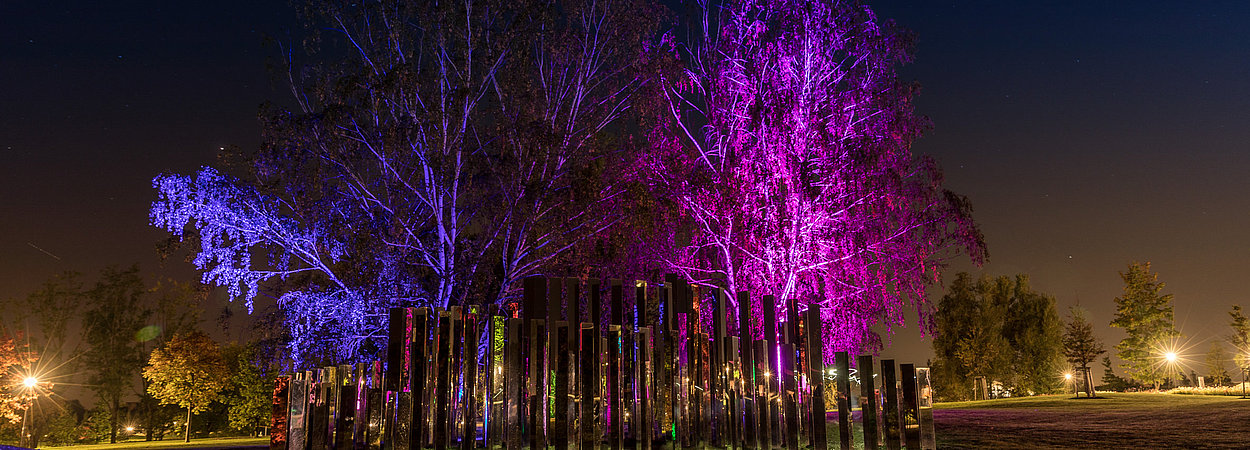Art in the Park
Open Air Gallery
In the Gärten der Welt you can discover more than just flowers and trees. Since the Berlin Garden Show in 1987, the most diverse works of art have here an unusual setting and open up new perspectives for viewing the surrounding park and urban landscape. At the IGA Berlin 2017, the collection was expanded again in order to include various artistic works. The art installations by Jeppe Hein, Martin Kaltwasser, and Anna Rispoli, realized with funds from the Stiftung Deutsche Kassenlotterie Berlin (German Lottery Foundation Berlin), are still visible in the Gardens of the World.
A Guide for Reflection
Directly in front of the visitors centre on Blumberger Damm, a surreal landscape of mirrored steles stretches out, which reflects their surroundings in a strange split-view manner. As you approach, you appear in mirrored surfaces mounted at different angles. The “Reflecting Gardens” by the Danish artist Jeppe Hein are an invitation to critically examine yourself and the environment in which you are moving. The Mirror Maze is the first publicly accessible work from the artist in his adopted home Berlin.
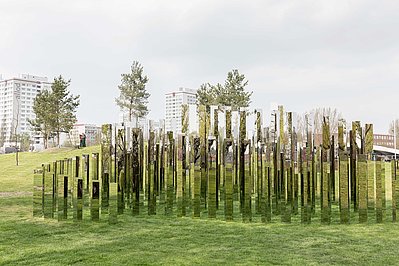
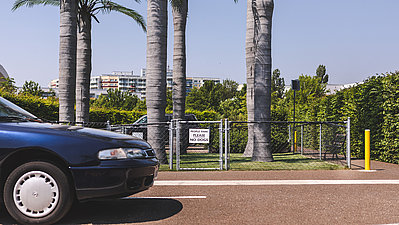
Ideology Critique
Next to the cable car station of the “Gardens of the World”, there are the International Garden Galleries, in which Martin Kaltwasser’s “Los Angeles Garden” is integrated in an almost tongue-in-cheek manner. His design is a detailed replica of the mini garden island of the Bergamont Station Car Park and its immediate surroundings. An eight-by-nine-meter fenced lawn with six tall palm trees and two benches – it’s an alibi garden surrounded by asphalt and parked vehicles that thereby addresses the displacement of nature by industry and invites you to critically observe urban landscapes.
Ringing Nature
Have you ever listened to the greenery? The sound installation “Listening green” by Georg Klein plays with the acoustic perception of landscape. Interactive “listening trees” surprise you with unexpected sound sequences as you pass the valley bridge. At the end of the bridge, you can then use the “sound telescope” to search the surroundings for (fictitious) sounds. In the process, an acoustic story develops that, in the context of the “Gardens of the World”, addresses the way in which the unfamiliar is dealt with in nature – and involves you.
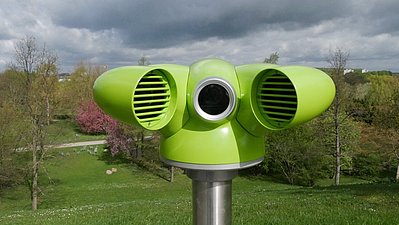
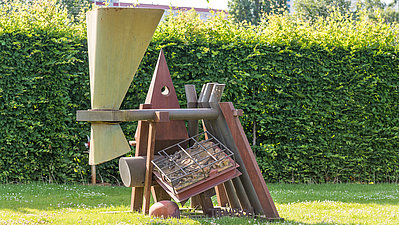
Of missing cappuccinos in Harlem
David Lee Thompsom never simply gave names to his works of art, but wrote poems about them. The poem in this work of art begins with the words: "One dead Pawn in the Court of the Crimson King". The poem is about unfulfilled expectations and "missing cappuccinos in Harlem". If you look closely at the artwork, you will find three letters: B; A; E. In David Lee Thompson's poem, these stand for "Bite - Abyss - Epitaph". Thompson draws surprising conclusions: "Read the writing on the façade (keystone), and if it is too good to be true, it probably is." And this is true in many situations, isn't it?
Simply Magical
Near the Karl Foerster Perennial Garden, you can marvel at typical scenes from the fairy-tales of the Brothers Grimm. They were designed by the Berlin sculptor Gorch Wenske for the Berlin Garden Show in 1987 and placed in a new context at the IGA Berlin 2017. The figures have been given an additional narrative thanks to a sound installation by artist Anna Rispoli. Born in Italy and now living in Berlin, the artist collected stories from the inhabitants of Marzahn-Hellersdorf, which she condensed into a sound collage titled “Not all stories are narrated...”.
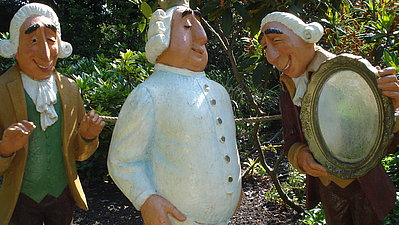
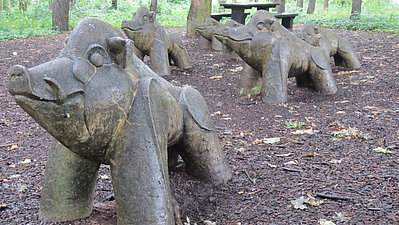
Agave, Wild Boar, Wood and Grain
These are the titles of just some of the numerous sculptures that populate the grounds of the Gärten der Welt. On a tour, you will come across for example the metal sculpture “Agave” by the art collective Rüdiger Buhlau, which branches and stretches out across the sky, or the wooden figures “Wood” and “Grain” by the artist Gerd Owsian. “The Wild Boars” by Dieter Graupner and the rocking frame “Mischa and Masha” are not only beautiful to look at, but also for climbing and playing on. Just like the expressive “pair of figures” by the sculptor Ingeborg Hunzinger, they were created during the time of the GDR (East Germany) and have adorned the grounds since the Berlin Garden Show in 1987. Two other sculptures - “Head Integral” and “Encounters” by the artists Clemens Gröszer and Rolf Biebl - are contemporary reflections of GDR art.
